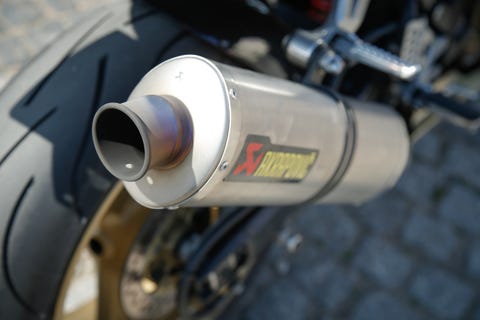Smart Cameras to Enforce Loud Exhaust Policy in California Starting in 2023

Marc UrbanoCar and Driver
In an effort to reduce noise pollution, California is set to implement camera-automated exhaust noise enforcement.The pilot program will span from January 2023 to December 2027 and will be tested in six different cities across the state.Camera-enforced fines will be issued only after subsequent violations of the 95-decibel ceiling for cars and 80-decibel limit for motorcycles, respectively.
Well known for stringent emissions and modification regulations, the California State Legislature has approved a five-year automated enforcement pilot program targeting loud exhaust from cars. If signed by California Governor Gavin Newsom, the camera-enforcement program will begin January 1, 2023. The bill specifies six undisclosed cities throughout California to take part in this experimental program.
Before panic sets in among West Coast enthusiasts, it’s important to read the fine print of the nuanced Senate bill. California has long specified the decibel level at which stock or modified exhaust systems are deemed too loud—95 decibels for cars and 80 for motorcycles built after 1985—and this hasn’t changed. What has changed, however, is the means of enforcement.
A “sound-activated enforcement system” means sensors are activated when noise levels exceed legal limits, and smart cameras are used “to obtain a clear photograph of a vehicle license plate,” the text of Senate Bill 1079 reads. Similar to speed-camera thresholds found around the world, these cameras are triggered by high decibel levels and can zero in on the offender’s plate. It is not immediately clear how these cameras will pinpoint vehicles in traffic, or how they will differentiate between cars and motorcycles.
Compared to Assembly Bill 1824, which repealed the fix-it ticket option in favor of a mandated fine, SB 1079 provides more progressive protections for road goers. Signage is required to notify motorists before they enter an enforcement zone. First time offenders will not be charged and only subsequent violations will incur fines. Additionally, participating city governments are required to create payment plans, deferment options, and fine waivers for low-income vehicle owners who demonstrate a temporary or indefinite inability to pay.
Questions remain about this fledgling program and its implementation as it awaits executive approval. While the bill does not specify which roads will be subject to enforcement, a spokesperson for California State Senator Anthony Portantino confirmed that cities included in the program will be responsible for deciding which roads to enforce using a public input process. The fine amount remains unclear at this time. Beyond the maintenance and continuation of the program, creating tangible “traffic calming infrastructure” is the sole use for revenue generated by these fines, state officials say.

NurPhotoGetty Images
These cameras will pose a conundrum for manufacturers and enthusiasts alike. Some cars and many motorcycles, depending on the road and driving style, will easily exceed the 95 and 80 decibel limits straight from the factory. Based on Car and Driver testing, examples include the 2016 Porsche 911 GT3 RS (108 decibels) and the 2019 Chevrolet Corvette ZR1 and 2019 McLaren 720S Spider, both at 99 decibels.
It will be curious to gauge the accuracy of the enforcement devices, how manufacturers will continue to alter vehicles for California markets, and if the progressive penalty policies become a blueprint for more equitable traffic enforcement. In the meantime, California residents will be making the switch over to the high-pitched hum of electric power anyway.
This content is created and maintained by a third party, and imported onto this page to help users provide their email addresses. You may be able to find more information about this and similar content at piano.io




